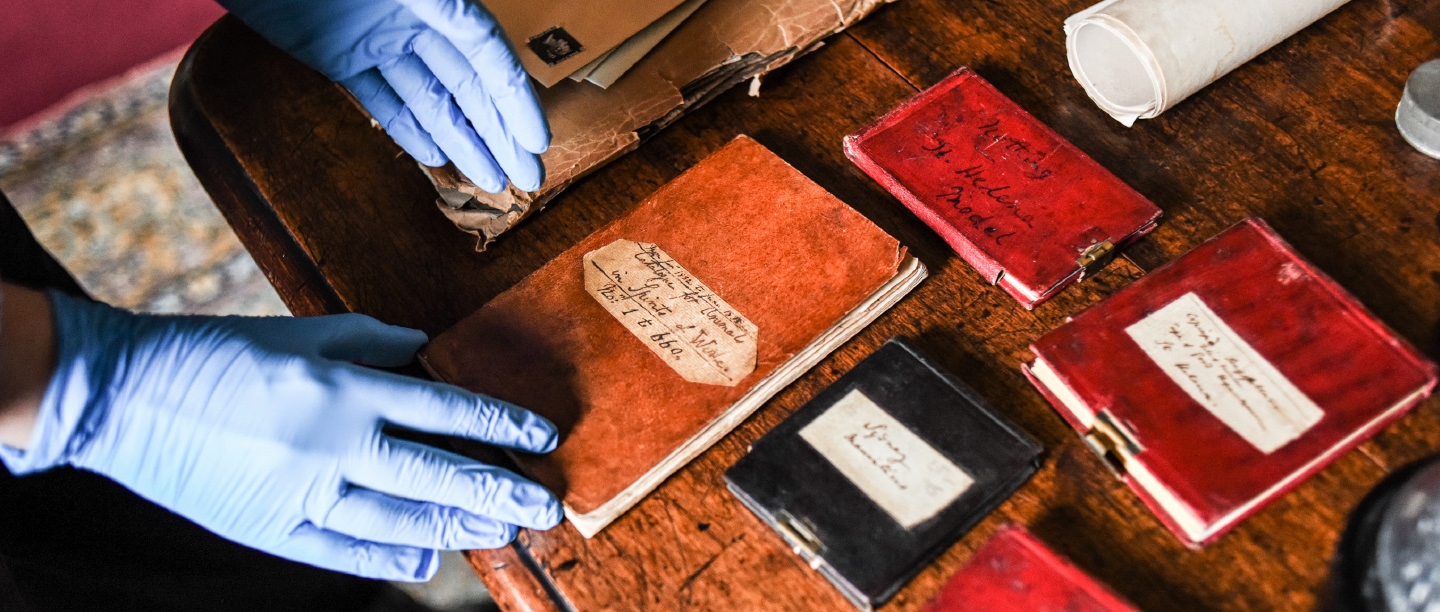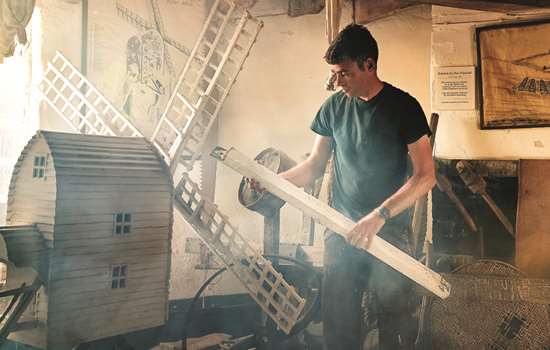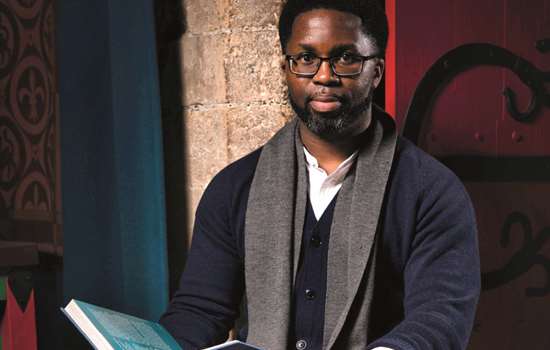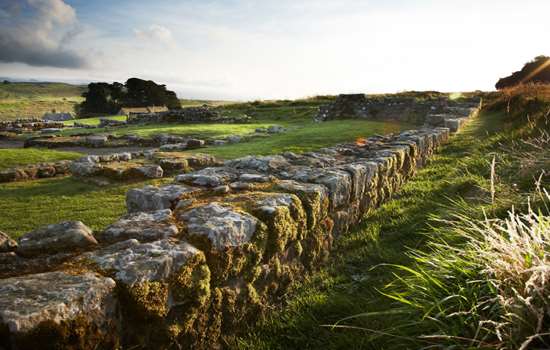THOMAS CHALLIS
Gardener, Audley End House and Gardens, Essex
The diary of Thomas Challis, a young gardener at Audley End in the 1790s, was discovered by chance, advertised on an online auction site in 2019. Garden diaries from this period are very rare so we were delighted to acquire it. The diary starts with a summary of Thomas’s career. He arrived at Audley End in June 1795 aged 18 having already served three-and-a-half years as a garden apprentice at Cheveley Park near Newmarket. Thomas left Audley End in February 1798 and subsequently worked at various nurseries and estates, including four years for Lord Braybrooke at Billingbear, in Berkshire. In 1810 he became head gardener at Standlych Park near Salisbury and remained there for the rest of his career.
Young gardeners such as Thomas were encouraged to keep a note of their daily activities during their training, so it is not surprising to find the diary filled with details of planting, propagating, pruning and caring for fruit and vegetables in the kitchen garden. There are also pages of notes transcribed from gardening books, including Treatise on the Cultivation of the Vine (1790).
Dr Andrew Hann, properties historians’ team leader
SIR HENRY PONSONBY
Queen Victoria’s private secretary, Osborne, Isle of Wight
Major-General Sir Henry Ponsonby (pictured here c.1885) was a prolific correspondent, a decorated Crimean war veteran and Queen Victoria’s longest-serving private secretary (from 1870 to 1895). His letters to his wife Mary, herself a lady-in-waiting – which are held at the Royal Archives in Windsor Castle – reveal much about working for the queen, life at Osborne and the business of managing the public and private work of the monarchy.
Whether working around the Queen’s fickle moods and stubbornness, resolving court dramas or liaising with politicians, Sir Henry’s letters provide a glimpse behind the scenes at Osborne by the queen’s most senior courtier. Well known for his wit, which he shared with Mary, Sir Henry was a descendent of the old Whig aristocracy and a lifelong Liberal. He spent several months a year at Osborne and died there in November 1895. He is buried at Osborne’s parish church, St Mildred’s in Whippingham.
Lee Butcher, historian
JOHN LAND
Head keeper, Wrest Park, Bedfordshire
John Land (pictured on the right on a shoot at Wrest Park in the 1920s) was head keeper at the Stowe estate in Buckinghamshire from 1890–96, serving the exiled Prince Philippe of Orléans, heir apparent to the French throne. After this, he was head keeper at Wrest Park for more than 30 years, working for Earl Cowper, the American ambassador Whitelaw Reid, and the industrialist John George Murray.
Land’s diary (now kept at the Huntington Library in California) is more of a notebook comprising a mixture of receipts, recipes for treating sick dogs and horses, lists of rabbits netted by the keepers, and treatments for ailments such as rheumatism and lumbago. Many of the entries seem to relate to the 1870s, when Land was working as a keeper at Grimsthorpe Castle, Lincolnshire and at Bottomsall, Nottinghamshire. Nevertheless, the survival of the notebook suggests Land continued to find the various treatments useful throughout his long career.
Dr Andrew Hann, properties historians’ team leader
EMILY CHESTER
Cook-housekeeper, Brodsworth Hall and Gardens, South Yorkshire
Emily Chester, pictured centre at Brodsworth Hall (image courtesy of the family of Mrs E Wingell), was the longest-serving cook at Brodsworth in the 20th century. Working there for more than 60 years, she started as a garden girl and then became cook and, in 1936, cook-housekeeper, a position that she held for nearly 50 years. She never married and retired in 1981 due to ill health. By this time, she was the only member of staff living in, supported by daily cleaning ladies and temporary butlers (none of whom stayed long).
The Brodsworth Hall archive holds Emily’s recipe notebook, which contains a wealth of recipes, both hand-written by Emily and cut from newspapers or magazines. It’s a fascinating record, with some recipes also written out by the hall’s owner Sylvia Grant-Dalton and others by unknown hands. Many former servants have memories of Emily as an excellent cook, preparing Christmas dinner for 20 people in her seventies. Her ginger biscuits are fondly remembered to this day, as are the rock buns made with leftover butter rations during the Second World War.
Eleanor Matthews, curator of collections and interiors
AVIS CROCOMBE
Cook, Audley End House and Gardens, Essex
Avis Crocombe’s cookbook, kindly donated to us in 2009 by her great-great-nephew Bob Stride, provides a fascinating glimpse into the life of a 19th-century country house cook. The image here (from the collection of Bob Stride) is thought to be of Avis and her husband Benjamin Stride, and is dated 1886. Avis already featured in the service wing exhibition when the book was donated, so we knew the basics of her biography. She was born in north Devon, went into service by the age of 13, and worked her way up to be kitchen maid, then cook-housekeeper, in a number of country houses before arriving at Audley End as cook in around 1880.
What Avis’s small leather-bound cookbook adds is information about the food that she cooked, and the sources that she used for recipes. It is a working cook’s book, probably kept throughout her career, and used as an aide-memoire to note down particularly successful dishes or ones her employer liked. One recipe for ginger beer is noted as copied from The Field newspaper, shared by Lady Braybrooke.
Dr Andrew Hann, properties historians’ team leader
EDWARD HUNTER
Steward, Kenwood, Greater London
Edward Hunter was employed at Kenwood (colour print pictured here, 1825) as steward to the 3rd Earl of Mansfield in the early 19th century. The estate or land steward was one of the highest ranked members of the household serving an aristocratic family, responsible for managing the estate as a whole. Edward reported directly to Lord Mansfield, and his surviving letters, dated around 1815–20, paint a vivid and often amusing picture of life at Kenwood.
The letters chronicle the arrival of items sent by Lord Mansfield, including lettuces from Versailles, German celery, alpine strawberries, and countless seeds and cuttings to be cultivated at Kenwood. These obliged Edward to write lengthy lists of items received, including details of plants that had failed to survive the journey to England. Other letters describe staff shortages, the dangers of trying to feed pigs on boiled garden waste, the expense of filling the ice house and the arrival of an unexpected litter of puppies. The letters invariably conclude, ‘All well at Kenwood.’
Louise Cooling, assistant curator, Kenwood



